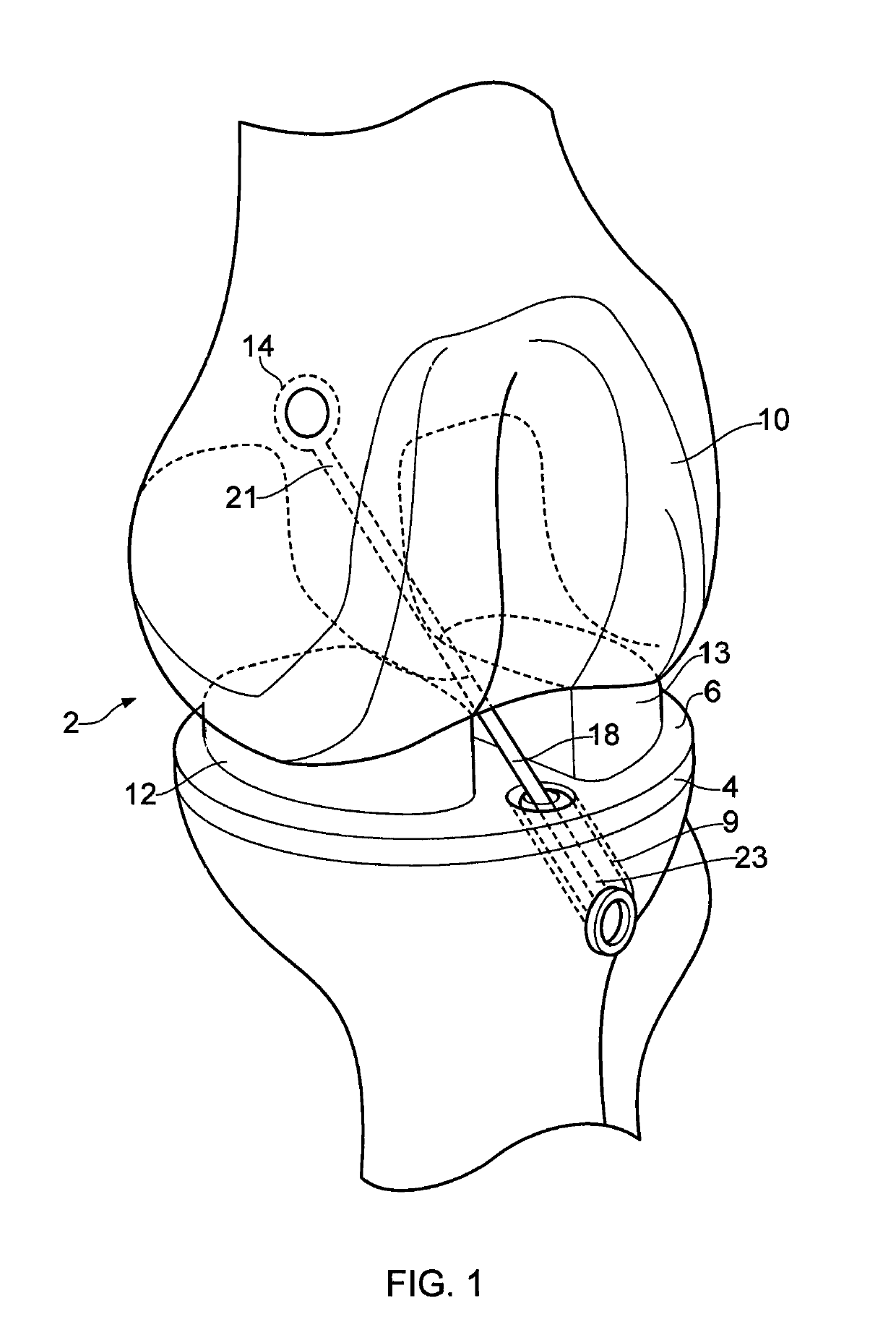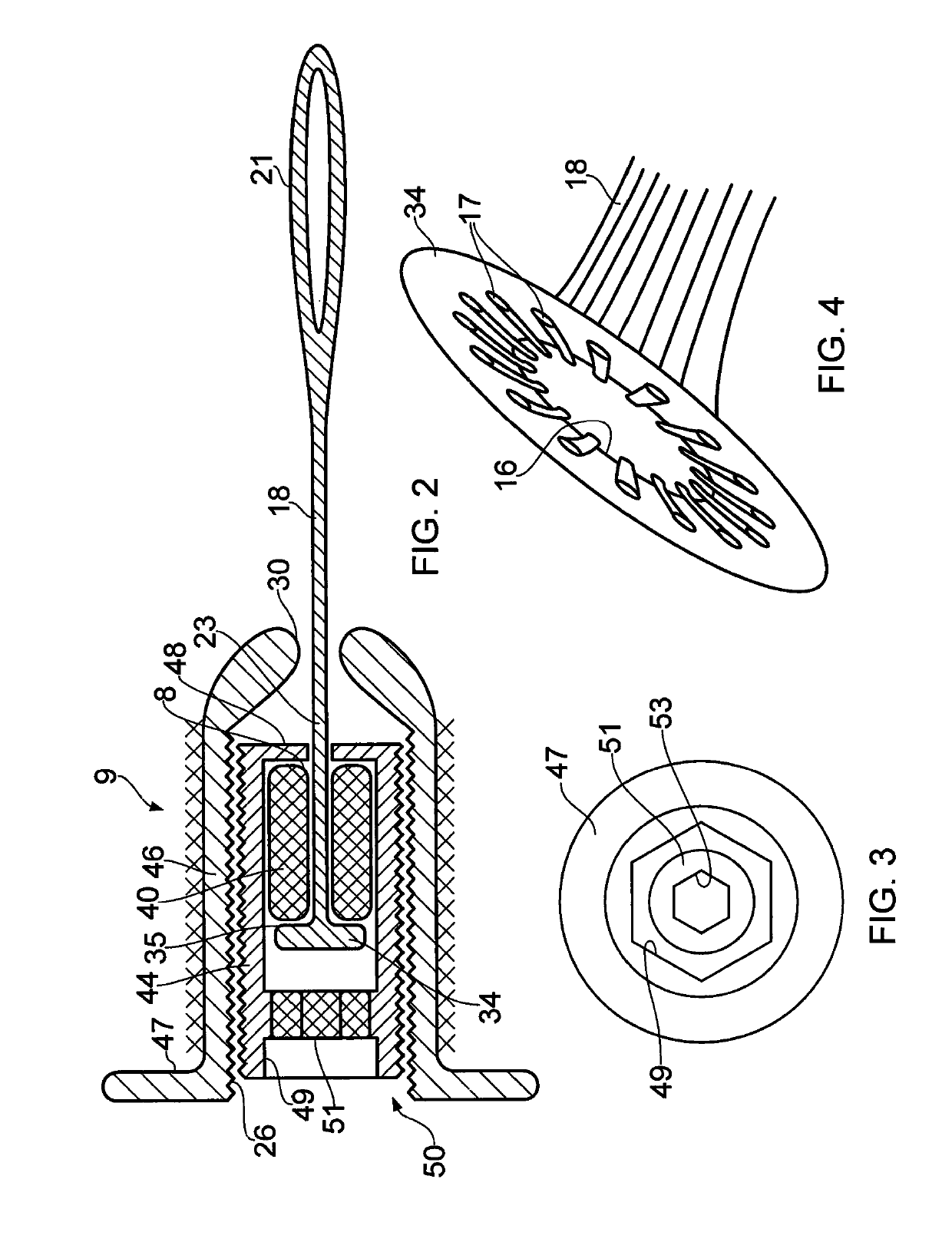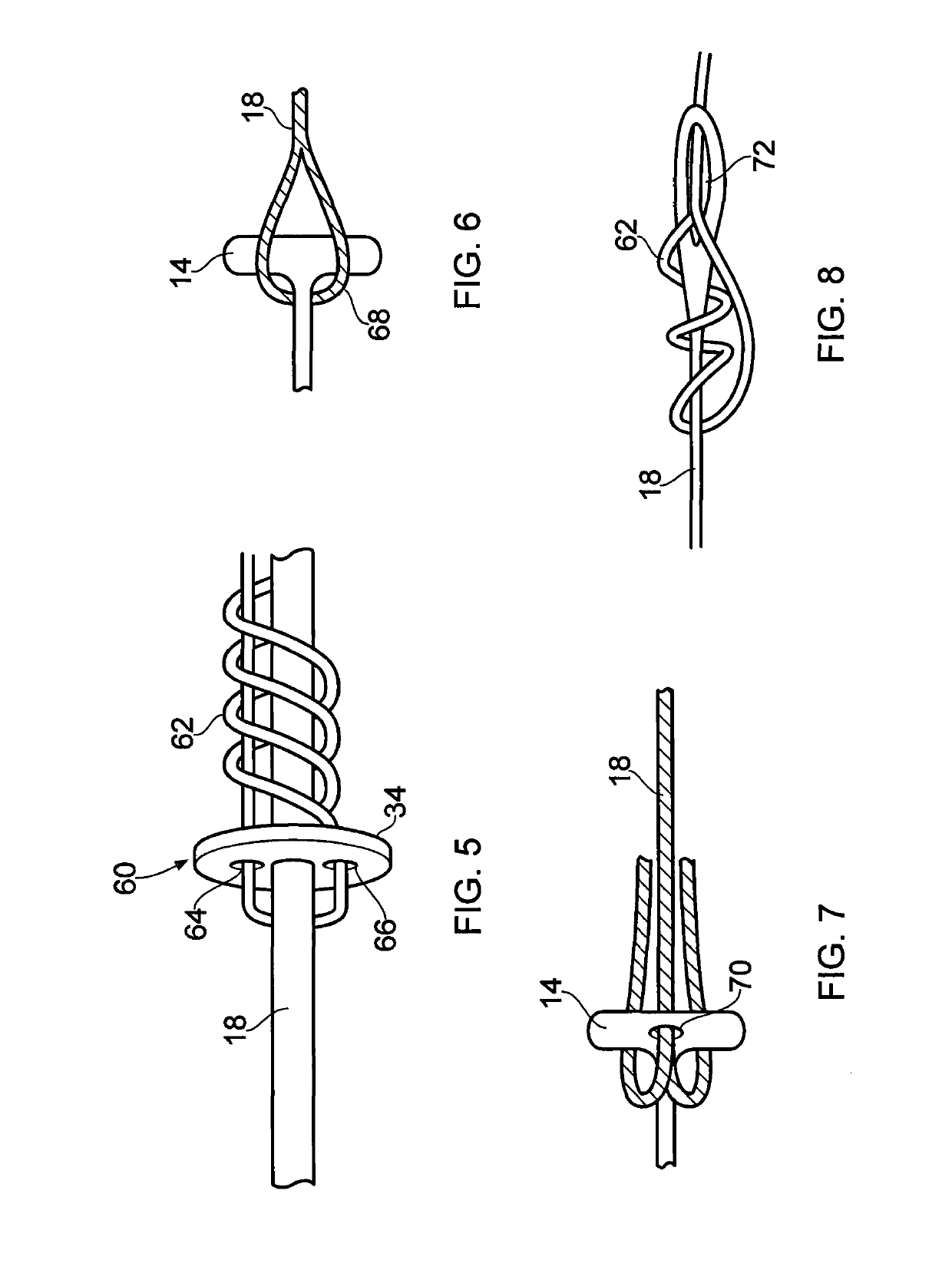Ligament assembly
a technology of ligament and assembly, which is applied in the field of ligament assembly, can solve the problems of inability to match the properties of artificial fibres, the loss of both cruciate ligaments, and the extreme, and achieve the effect of increasing the tear out for
- Summary
- Abstract
- Description
- Claims
- Application Information
AI Technical Summary
Benefits of technology
Problems solved by technology
Method used
Image
Examples
Embodiment Construction
[0067]FIG. 1, illustrates a knee joint in which is implanted a total joint replacement prosthesis and a ligament assembly. However, it will be appreciated that the ligament assembly described herein can be used with a partial joint replacement prosthesis, or on a knee joint without any form of joint replacement prosthesis.
[0068]Referring to FIG. 1, a knee joint is fitted with a prosthesis 2 comprising a tibial component 4 having a tibial tray 6 integrally formed with a stem (not shown), a femoral component 10 and a pair of bearing components 12, 13. The bearing components 12, 13 separate the tibial component 4 and femoral component 10, and are formed with proximal and distal bearing surfaces which engage corresponding bearing surfaces on the tibial tray 6 and on the femoral component 10. These various bearing surfaces enable the tibial component 4 to rotate and translate relative to the femoral component 10. The bearing components 12, 13 may, for example, be meniscal bearing compone...
PUM
 Login to View More
Login to View More Abstract
Description
Claims
Application Information
 Login to View More
Login to View More - R&D
- Intellectual Property
- Life Sciences
- Materials
- Tech Scout
- Unparalleled Data Quality
- Higher Quality Content
- 60% Fewer Hallucinations
Browse by: Latest US Patents, China's latest patents, Technical Efficacy Thesaurus, Application Domain, Technology Topic, Popular Technical Reports.
© 2025 PatSnap. All rights reserved.Legal|Privacy policy|Modern Slavery Act Transparency Statement|Sitemap|About US| Contact US: help@patsnap.com



